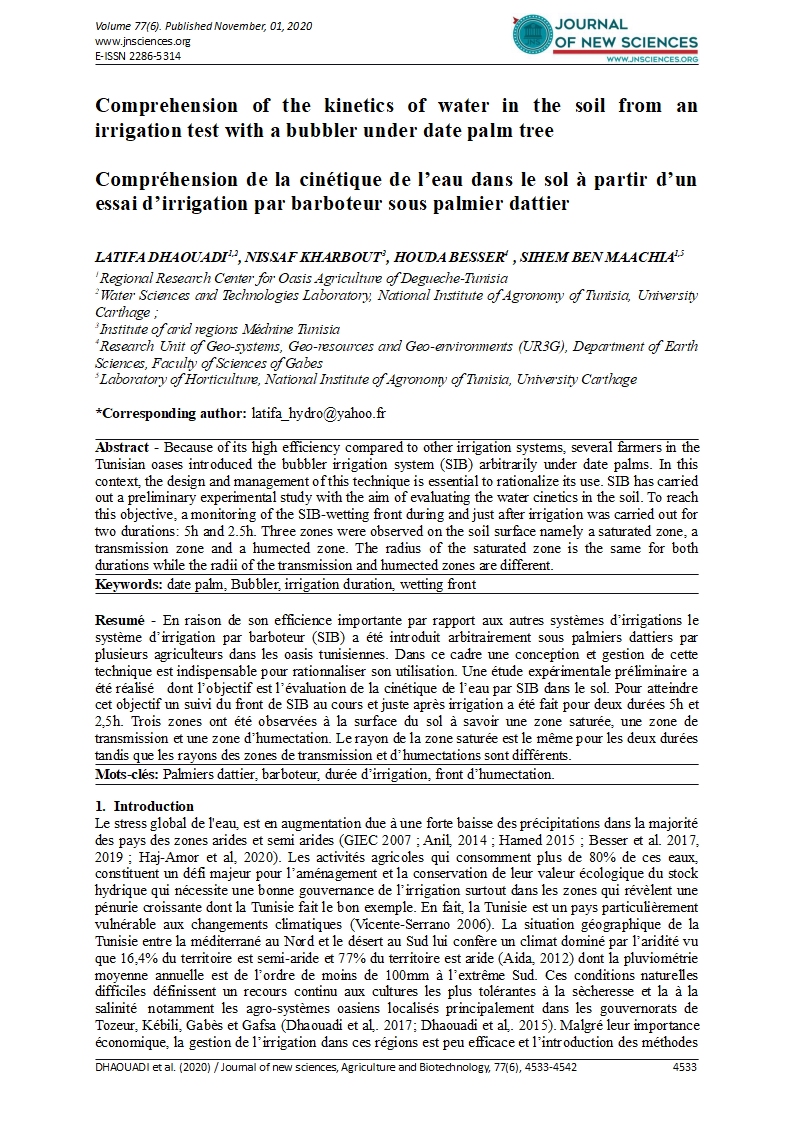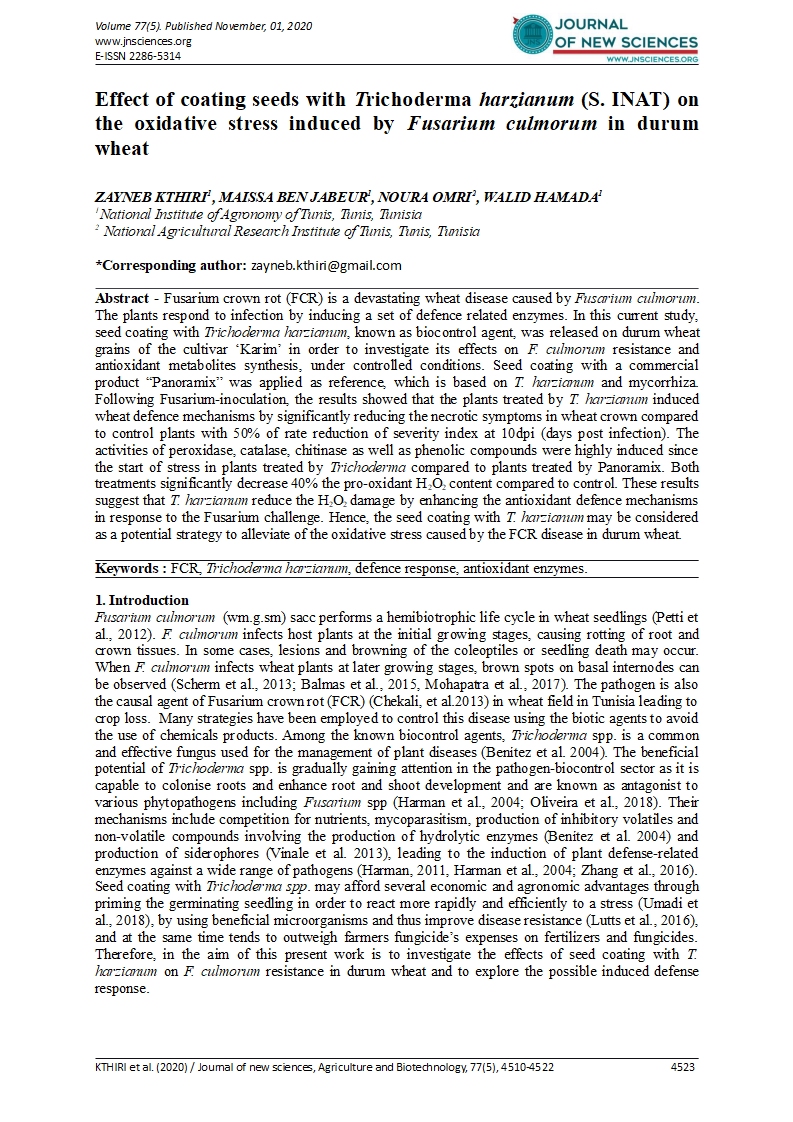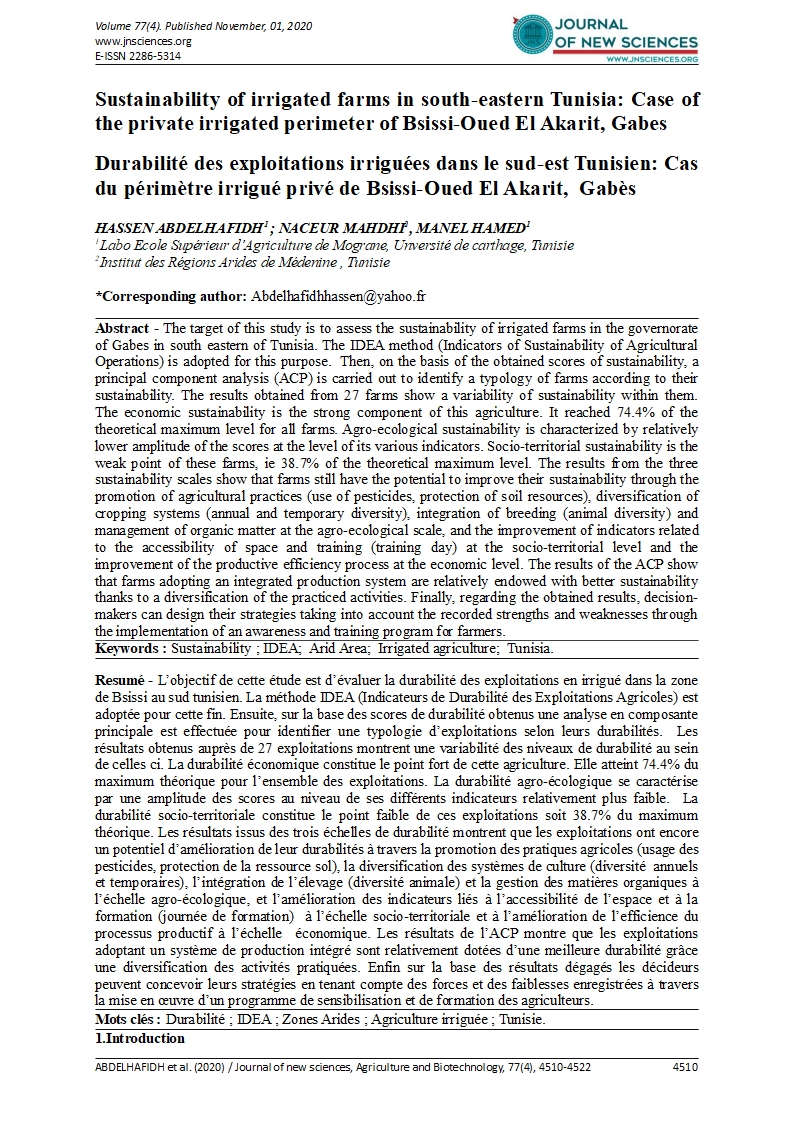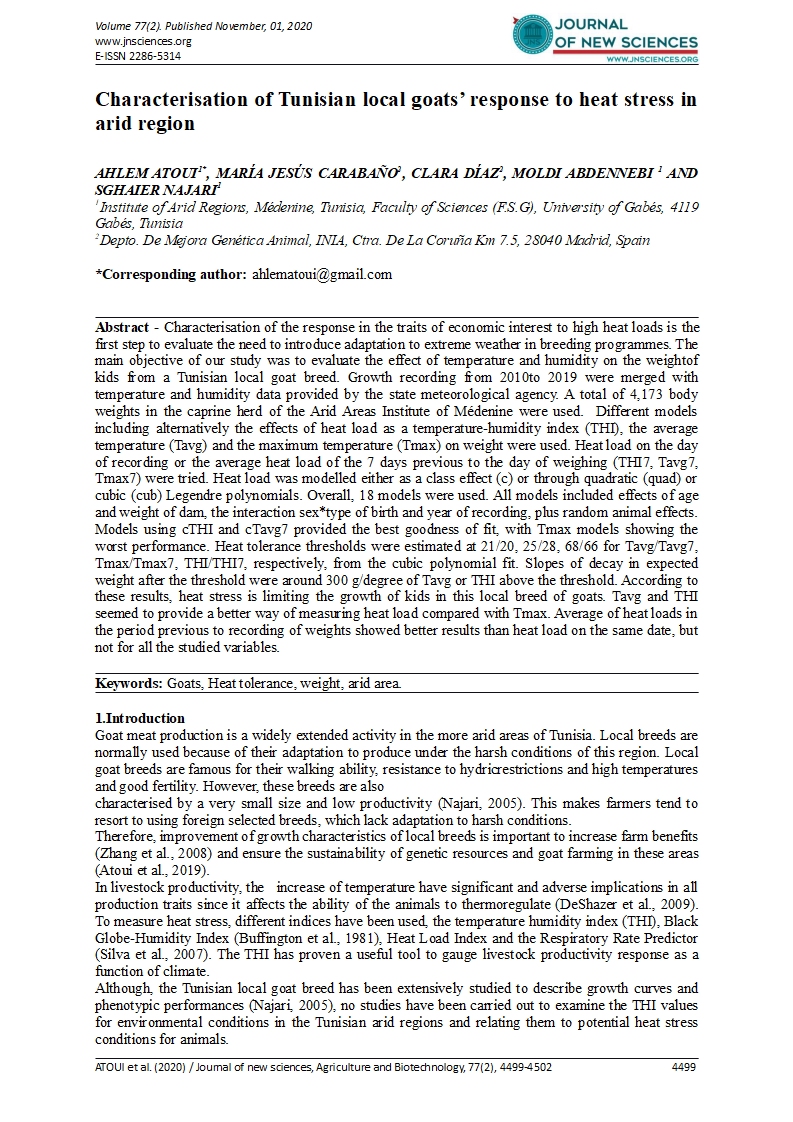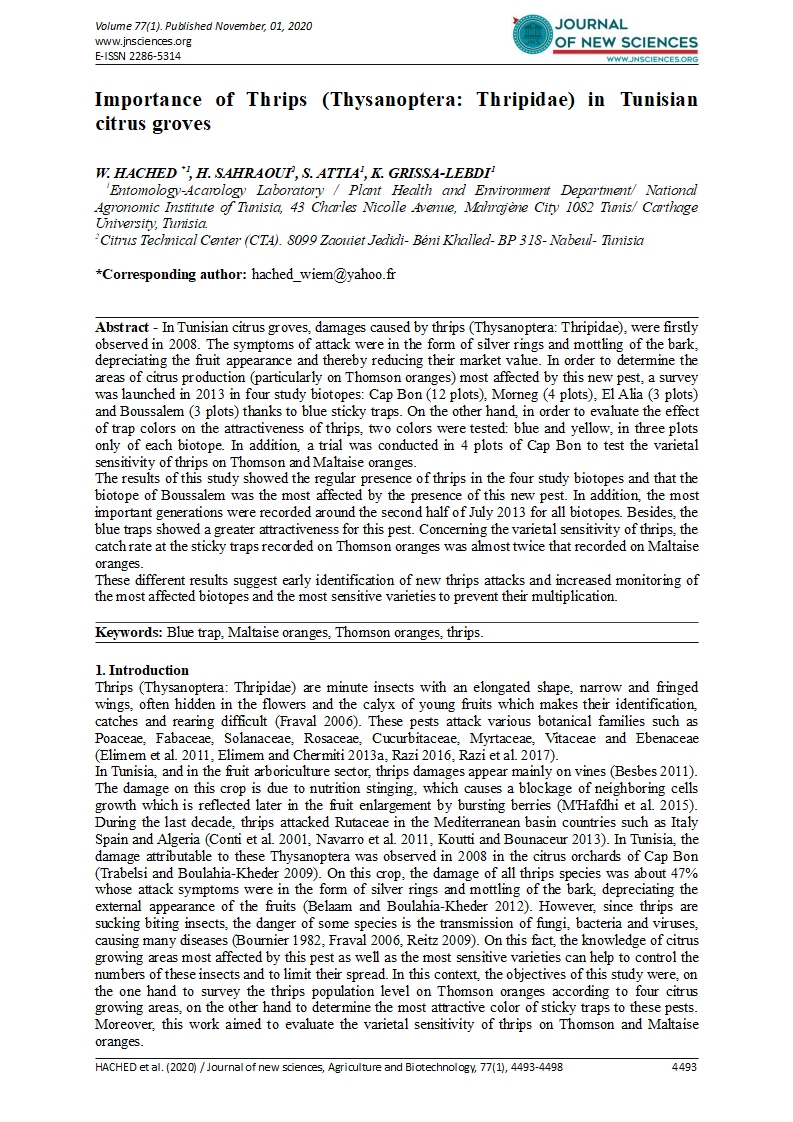- Category: Volume 77
- Hits: 3231
Effect of the extraction method on the content of phenolic compounds and the antioxidant and antibacterial potential of Mentha spicata L.
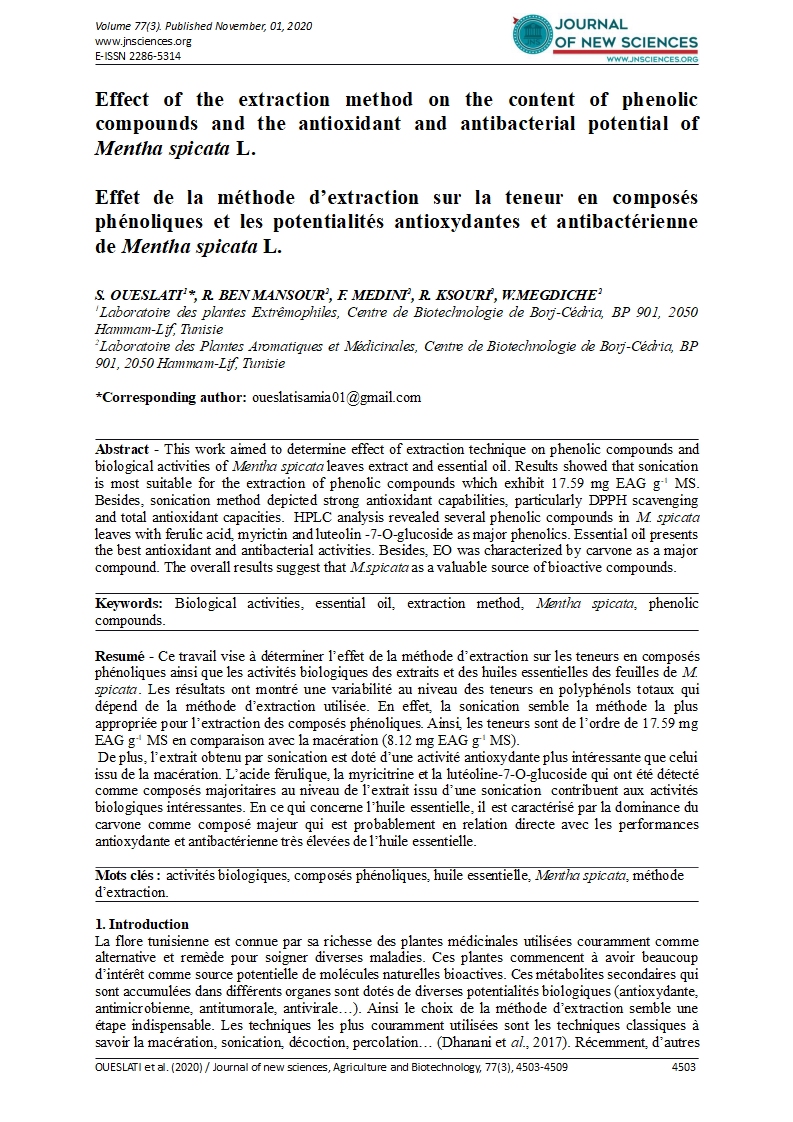
Effet de la méthode d’extraction sur la teneur en composés phénoliques et les potentialités antioxydantes et antibactérienne de Mentha spicata L.
S. OUESLATI1
R. BEN MANSOUR2
F. MEDINI2
R. KSOURI2
W.MEGDICHE2
1Laboratoire des plantes Extrêmophiles, Centre de Biotechnologie de Borj-Cédria, BP 901, 2050 Hammam-Lif, Tunisie
2Laboratoire des Plantes Aromatiques et Médicinales, Centre de Biotechnologie de Borj-Cédria, BP 901, 2050 Hammam-Lif, Tunisie
Abstract - This work aimed to determine effect of extraction technique on phenolic compounds and biological activities of Mentha spicata leaves extract and essential oil. Results showed that sonication is most suitable for the extraction of phenolic compounds which exhibit 17.59 mg EAG g-1 MS. Besides, sonication method depicted strong antioxidant capabilities, particularly DPPH scavenging and total antioxidant capacities. HPLC analysis revealed several phenolic compounds in M. spicata leaves with ferulic acid, myrictin and luteolin -7-O-glucoside as major phenolics. Essential oil presents the best antioxidant and antibacterial activities. Besides, EO was characterized by carvone as a major compound. The overall results suggest that M.spicata as a valuable source of bioactive compounds.
Keywords: Biological activities, essential oil, extraction method, Mentha spicata, phenolic compounds.

